
a.
To describe: The two ways in which the spinal cord can be damaged in a fall.
Concept introduction: The spinal cord is a column of nerve tissue that arises from the medulla oblongata to the second lumbar vertebra within the vertebral column. There are thirty-one pairs of spinal nerves that emerge from the spinal cord. The spinal nerves are named as per the location of the nerve in the vertebral column.
b.
To explain: The reason for which it is difficult to predict the degree of permanent damage to the spinal cord during the initial few days.
Concept introduction: The spinal cord is a column of nerve tissue that arises from the medulla oblongata to the second lumbar vertebra within the vertebral column. There are thirty-one pairs of spinal nerves that emerge from the spinal cord. The spinal nerves are named as per the location of the nerve in the vertebral column. Spinal cord injury mainly occurs due to fracture or displacement of several vertebrae that compresses, tears, or stretches the spinal cord.
c.
To describe: The usual effects of transection of the spinal cord at C4-C5 immediately after the injury and after recovery from spinal shock.
Concept introduction: The spinal cord is a column of nerve tissue that arises from the medulla oblongata to the second lumbar vertebra within the vertebral column. There are thirty-one pairs of spinal nerves that emerge from the spinal cord. The spinal nerves are named as per the location of the nerve in the vertebral column. Spinal cord injury mainly occurs due to fracture or displacement of several vertebrae that compresses, tears, or stretches the spinal cord.
To explain: The reason why there is a difference in the effects over time.
Concept introduction: The spinal cord is a column of nerve tissue that arises from the medulla oblongata to the second lumbar vertebra within the vertebral column. There are thirty-one pairs of spinal nerves that emerge from the spinal cord. The spinal nerves are named as per the location of the nerve in the vertebral column. Spinal cord injury mainly occurs due to fracture or displacement of several vertebrae that compresses, tears, or stretches the spinal cord.
d.
To explain: The cause and effect of autonomic dysreflexia and the way in which the signs are different from those of a stress response.
Concept introduction: The spinal cord is a column of nerve tissue that arises from the medulla oblongata to the second lumbar vertebra within the vertebral column. There are thirty-one pairs of spinal nerves that emerge from the spinal cord. The spinal nerves are named as per the location of the nerve in the vertebral column. Spinal cord injury mainly occurs due to fracture or displacement of several vertebrae that compresses, tears, or stretches the spinal cord.
Trending nowThis is a popular solution!

Chapter 14 Solutions
EBK GOULD'S PATHOPHYSIOLOGY FOR THE HEA
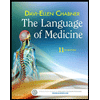 The Language of Medicine, 11eHealth & NutritionISBN:9780323370813Author:Davi-Ellen Chabner BA MATPublisher:Saunders
The Language of Medicine, 11eHealth & NutritionISBN:9780323370813Author:Davi-Ellen Chabner BA MATPublisher:Saunders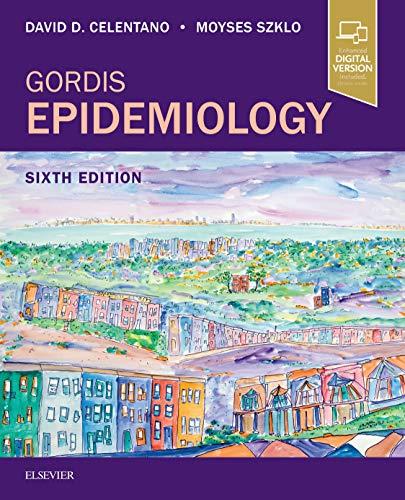 Gordis EpidemiologyHealth & NutritionISBN:9780323552295Author:David D. Celentano, Moyses SzkloPublisher:ELSEVIER
Gordis EpidemiologyHealth & NutritionISBN:9780323552295Author:David D. Celentano, Moyses SzkloPublisher:ELSEVIER Nutrition Through The Life CycleHealth & NutritionISBN:9781337919333Author:Brown, Judith E.Publisher:Cengage Learning,
Nutrition Through The Life CycleHealth & NutritionISBN:9781337919333Author:Brown, Judith E.Publisher:Cengage Learning,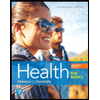 Health: The Basics (13th Edition)Health & NutritionISBN:9780134709680Author:Rebecca J. DonatellePublisher:PEARSON
Health: The Basics (13th Edition)Health & NutritionISBN:9780134709680Author:Rebecca J. DonatellePublisher:PEARSON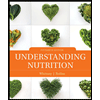 Understanding Nutrition (MindTap Course List)Health & NutritionISBN:9781337392693Author:Eleanor Noss Whitney, Sharon Rady RolfesPublisher:Cengage Learning
Understanding Nutrition (MindTap Course List)Health & NutritionISBN:9781337392693Author:Eleanor Noss Whitney, Sharon Rady RolfesPublisher:Cengage Learning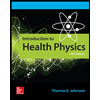 Introduction To Health PhysicsHealth & NutritionISBN:9780071835275Author:Johnson, Thomas E. (thomas Edward), Cember, Herman.Publisher:Mcgraw-hill Education,
Introduction To Health PhysicsHealth & NutritionISBN:9780071835275Author:Johnson, Thomas E. (thomas Edward), Cember, Herman.Publisher:Mcgraw-hill Education,





